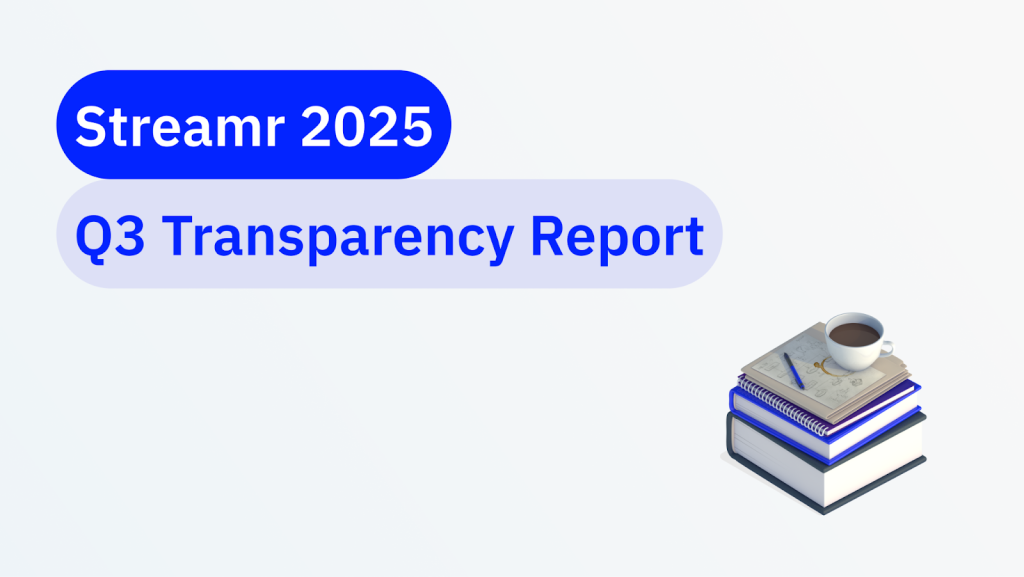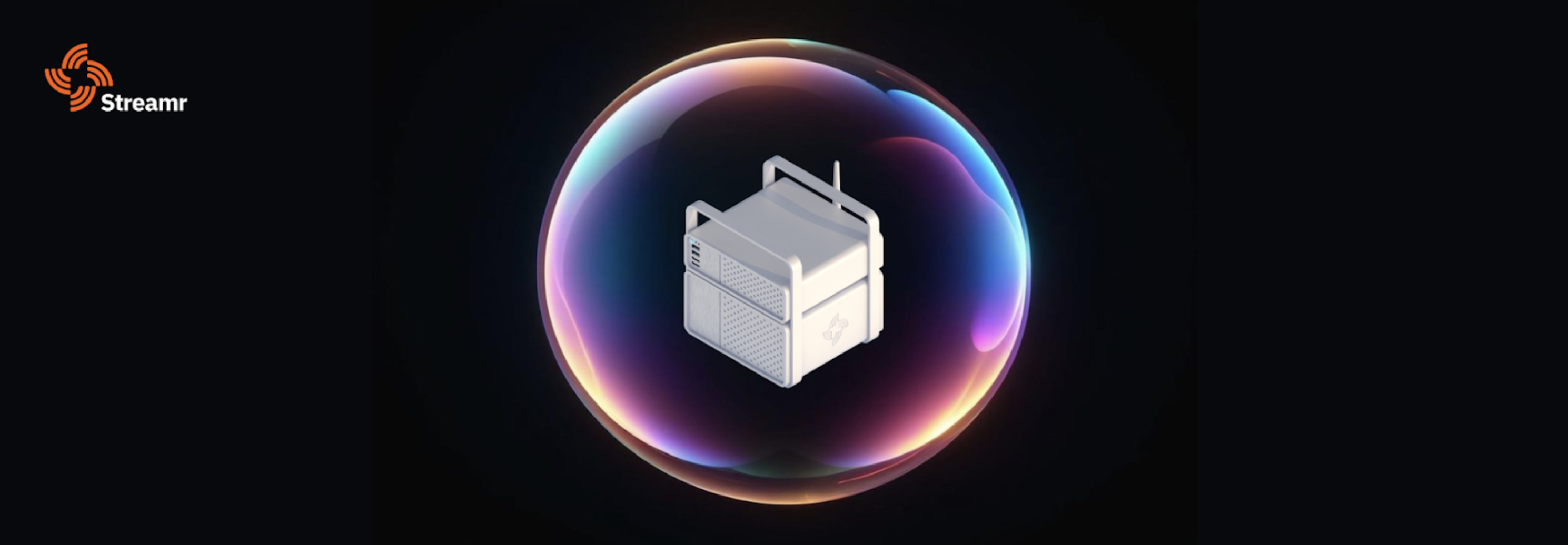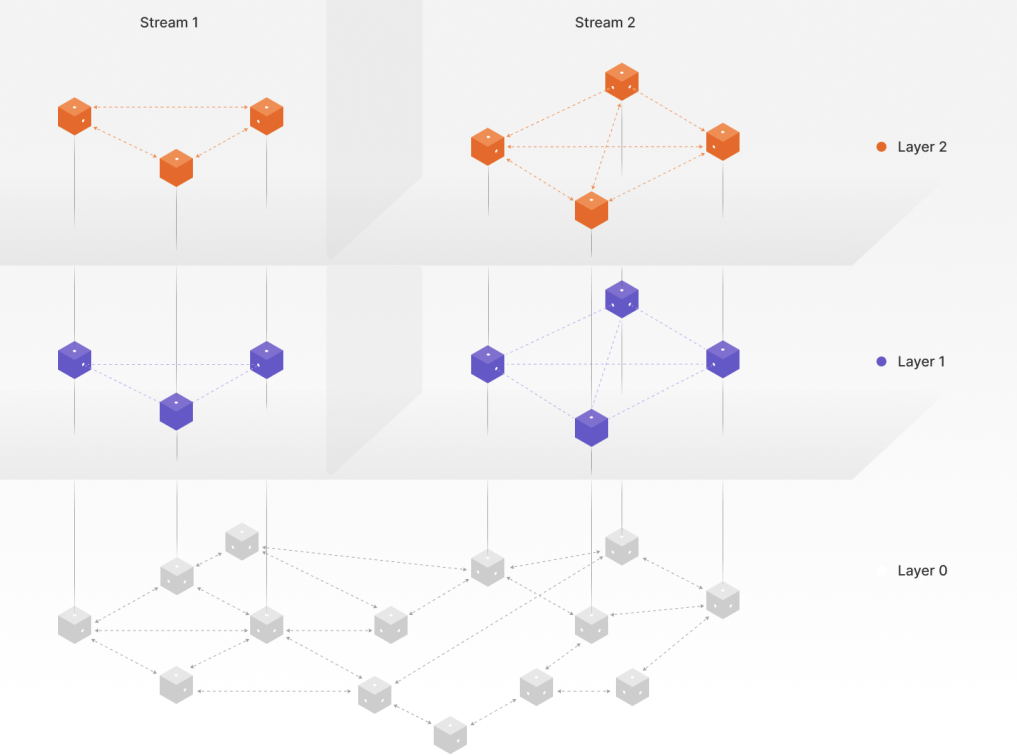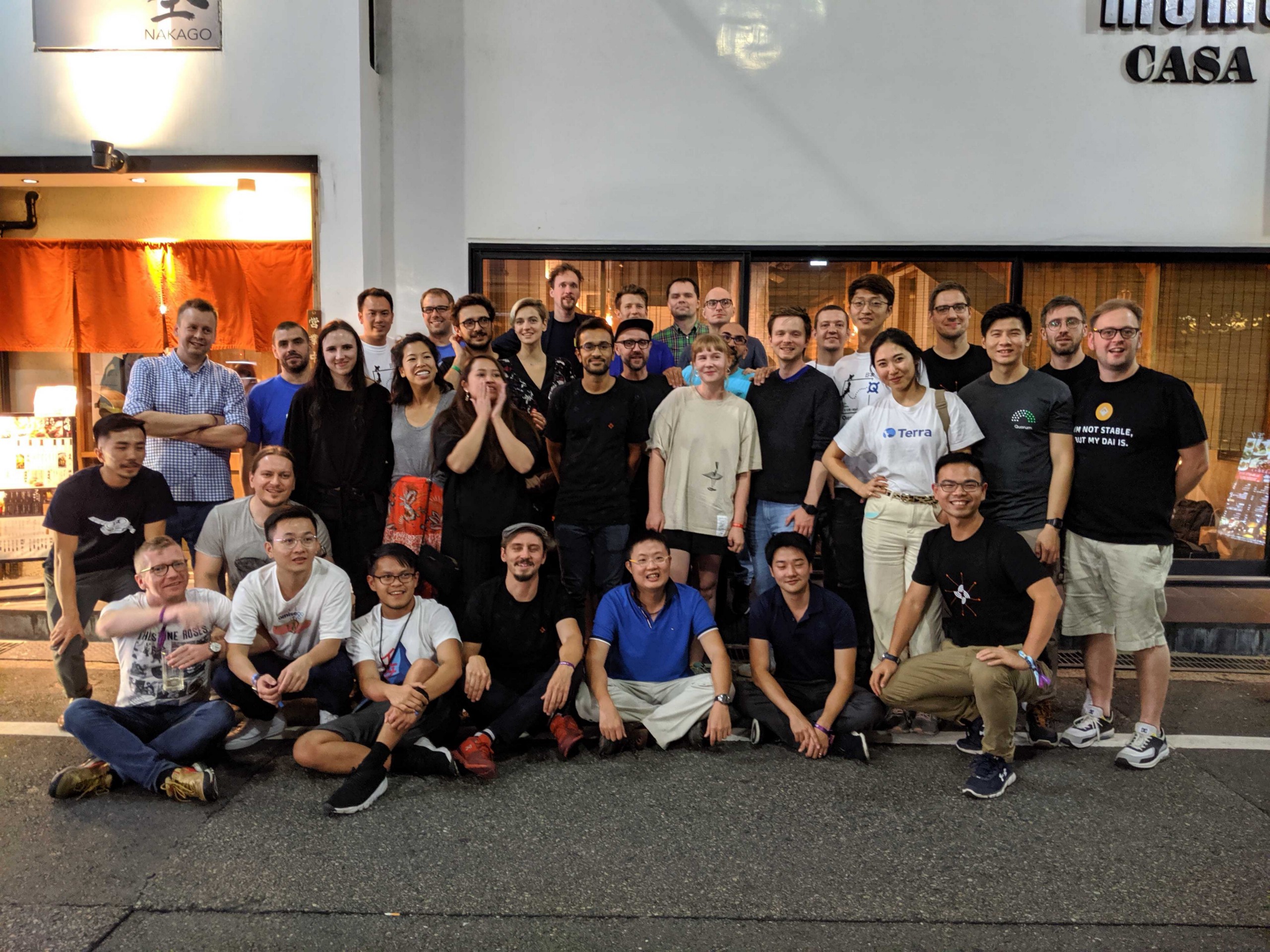
Welcome to this overview of Streamr’s ecosystem growth over 2019. This blog is intended to provide a recap of the project’s current state, share some of the major events that happened during last year, and also highlight some of the successful steps we took in order to grow the number of developers who have made a serious investment in the Streamr stack.
Let me start by asking a pretty central question. What kind of ecosystem has Streamr been trying to create? For over a year now, building Streamr’s ecosystem has been my core focus. What we’ve envisioned as a thriving ecosystem is a collection of community members, developers and project owners who have a genuine shared interest in Streamr’s long-term progress. And this isn’t just about a shared interest in seeing, for example, the worth of DATA tokens rise as the technology improves.
So what makes this ecosystem different from a general token holder community? We want to offer participants the opportunity to actively contribute to Streamr’s development in parallel with the advancement of their own project and business ideas. For this, I believe people need to have a real sense of control over how their own personal goals can be realised in conjunction with our shared ones. This ethos is one I’ve tried to weave into every external relationship I’ve developed over the last year.
Before focusing on external outreach and community run pilots, we had to build our foundations first. So from 2018 to mid-2019 we put a lot of effort and focus on building out the tech foundational layers for Streamr. We needed to provide the necessary tools for other teams and developers to build on top of the Streamr stack.
It is why we released a hugely improved Core app (both in terms of look and functionality), a working p2p Network, and an early alpha version of Community Products. Only once those steps were taken could we really reach out and start attracting those builders who will go on to shape the next era of the data economy.
In late 2017, at the start of the project, we had just a handful of internal core developers and no existing ecosystem. Just over two years later we have almost the same number of developers and designers in our external community (15–20) than we do internally (18–19). These ecosystem developers are working in parallel and leveraging Streamr’s tech stack in many different ways, not simply because they believe in Streamr’s open-source vision but also because they find our solutions helpful when building out new business models.
While this absolute number currently remains comparatively small, these teams represent the spark that will hopefully ignite large scale growth in the coming years. Additionally, this number refers only to community devs that we have been working directly with so far. It does not include people who are testing our technology on the side but haven’t reached out yet, or those who are still in the initial phase like this team.
Below are some of the major projects that make up our ecosystem. Each of them are backed by teams of passionate people, eager to build viable businesses and shake up the data economy as it exists.
- Swash. The three to four-person Swash team is building out a browser-based plugin that rewards users for contributing their browsing data in a safe way, instead of just giving it up for free. Utilising Streamr’s Community Products tooling and Marketplace, you can see a preview of the aggregated data from beta testers here or join the Data Union by installing either Firefox or Chrome/Brave browser plugin.
- myDiem. Headed by Gang Liu, his three-person team in China is building a mobile app will allow users to monetize their mobile’s app usage statistics without revealing in-app information. We expect a functioning beta release by the end of Q1. You can see progress here.
- Optract’s three-person team is a decentralized content curation platform, which offers a transparent algorithm and has a built-in gamification model to incentivise users to contribute and vote for quality content. The three-person team, who joined Henri and other Streamr core members at Mozfest, London, in October 2019, is utilising Streamr’s p2p pub/sub Network to facilitate onboarding and communication between nodes.
- The HAL project is aiming to connect existing Web2 companies with the Web3 ecosystem by offering advanced and user-friendly modules to set up alerts and webhooks triggers for on-chain events. Their four-person team is planning to build a connector to leverage Streamr’s pub/sub Network, with the aim of giving their users the ability to push real-time on-chain events. It could unlock a new wave of use-cases and business models.
- Context is a mobile app aiming to offer users real-time insights about their community and daily life needs (e.g. Is this library crowded right now? Is this transport line on-time? Which are popular bars tonight?). Having a large variety of reliable real-time data is vital for the app, so the three-person team is potentially planning to leverage Streamr’s Marketplace API for data discovery and consumption.
As you’ll see, each of these projects is leveraging different use-cases from Streamr’s offering. The most exciting part is that they are all tackling sectors that already have existing and proven businesses in the Web2 world. So the real challenge is showing which alternative will be more sustainable for the future.
- Swash → data brokers like Jumpshot
- myDiem → app analytics like Data AI (previously: AppAnnie)
- Optract → content curation like Pocket
- HAL → event triggers between platforms like IFTTT
- Context → localised and real-time version of Yelp
We don’t have any guarantee as to which of them will succeed and how long it will take for that success to manifest, but we are definitely working hard this year to expand our ecosystem even further in order to increase the chances of creating a highly notable success.
Of course, the growth of these projects has been in part supported by Streamr’s Community Fund. Established last year, both Swash and myDiem were recipients of fund grants, all of which have been paid out in DATA tokens. Additionally, the benefits were not limited to just the monetary value of the grant. Grants like these hold recipients to account, effectively pushing developers to share frequent progress updates. In turn, that feedback loop helped those teams validate their offerings with potential users. A very special thanks goes to all the admins from Streamr’s own community, who managed the fund and built the foundation that will help improve its structure for the long run.
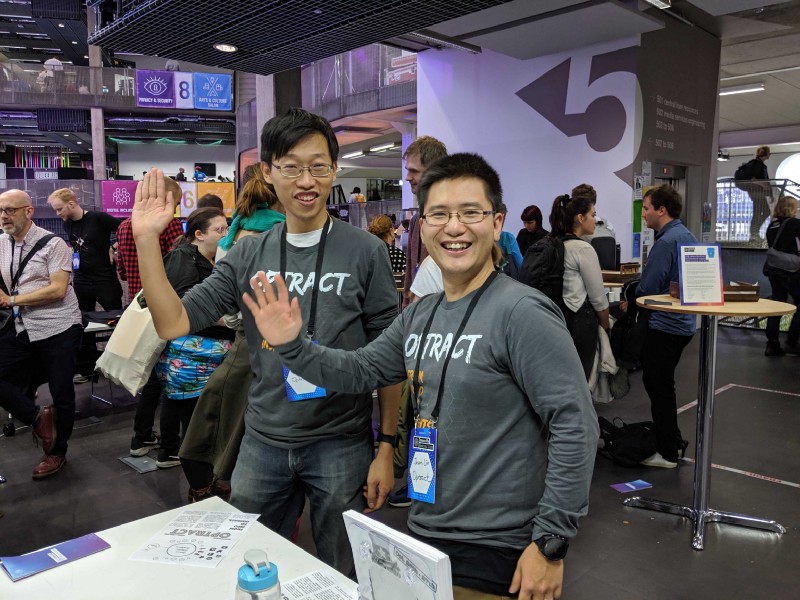
When talking about our ecosystem growth, we shouldn’t forget about other Web3 projects that offer complementary solutions to the Streamr stack. I recently met with 3box co-founder Danny Zuckerman to discuss potential collaborations and new use-cases we could jointly develop. 3box is focusing on building a decentralized data storage layer controlled directly by users. Those users are in control of which apps are granted access to their data. One easy development we discussed was to allow users to save settings — fully encrypted — without having to rely on servers, controlled by third parties, saving that data for them. (By the way, this is a fairly common type of issue for Web3 applications).
We thought Swash would be the perfect pilot for this scenario. For example, users might want to install Swash on multiple devices. Currently, settings on Swash cannot be transferred easily, especially if a user has numerous advanced filters switched on that have been stored locally within the plugin. The local storage means that Swash developers will themselves never know what text users have masked or which domains they have blacklisted. If all this data was stored in a central repository, there is a high risk of data abuse or hacks potentially compromising people’s privacy.
Storing the data via a 3box solution might therefore significantly increase user convenience without jeopardising security. Your local plugin could fetch your settings’ data from 3box’s decentralized database with your private key, without having to pass through Swash’s servers. Another interesting use case could be to permit users to store historical user data so that any other application can learn a user’s preference without having to learn from scratch. That’s real interoperability for you.
Last, but not least, we have been talking with the DAOstack team about potentially leveraging their platform to create a Community Products app that is fully managed as a DAO (decentralised autonomous organisation). The goal here is to prove the feasibility of a Data Union DAO that is not only community-driven on the data layer but also on the app development and management side.
If that were possible, users of an app won’t simply receive rewards for the data shared, but they will, for example, also have chance to elect admins who will go on to develop, design, market, and acquire customers for the app. Votes could be weighted based on app usage length and frequency. And successfully elected admins could receive revenue-sharing based on a bonding curve. That way early admins could get a higher reward given the higher risk and uncertainty.
Community-driven management could add a new viral element to growth compared to traditional network effects. Indeed, if there is one certainty that applies to both Web2 and Web3 projects, it’s this: the only sustainable way to reach large scale mass adoption is through a viral strategy. Paid campaigns can trigger early phase uptake, but simply marketing your way to mass adoption can otherwise take 100s of millions of dollars. A very promising initial candidate for this dual collaboration with DAOstack could be Gang’s myDiem app.
To conclude, the last year allowed us to lay down the groundwork to build Streamr’s vision for a full, thriving ecosystem. And already we are seeing the fruits of that work. Ideally, by the end of 2020, we will have a decent number of applications built on top of Streamr, released to the public and ready for adoption.
If all of this really interests you and you’d like to start building on top of the Streamr stack, join our developer community here or apply for a grant from the Community Fund to kick off your project.
Finally, I want to thank you all for reading this longish post and even more for all the support you all have given us along our journey together. From the entire Streamr crew, we hope you have a wonderful start to 2020.



